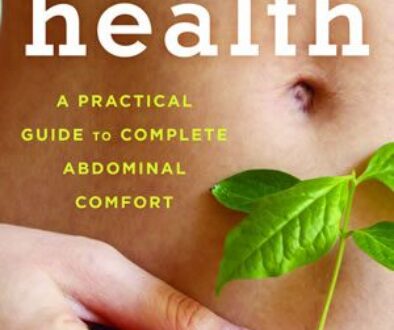Bloated? Uncomfortable Tummy?
To Cleanse or Not to Cleanse?
Once you’ve decided to reduce the over-consumption burden of the holidays, where do you start? Well, first, what is toxic burden? Then, let’s look at ways to reduce it with cleansing.
Toxic Burden is like “Mildew in the Shower” (Page 180):
Imagine that you finish your shower, step out, close the curtain, turn off the light and fan, and close the door to your bathroom. Over time, this damp, dark, anaerobic environment may lead to a buildup of mildew on the walls, in the corners, and on the ceiling. Left unattended, this situation may develop into dry rot affecting the walls, floors, and ceiling. In addition, if this dark, damp, anaerobic environment goes unused for a period of time, fungus and critters (parasites) may begin to move in and thrive in this very accommodating environment.
If we clean up the mildew and open the windows so that oxygen may circulate, then clean the shower frequently to avoid buildup, the mildew will not return. However, if we clean up the mildew but continue to keep the bathroom closed, damp, and dark, the mildew, fungus, and critters will return.
The same goes for our intestinal tract. When our digestion slows down due to improper chewing and/or consuming indulgence foods and beverages, soon enough, our insides are bound to develop “mildew in the shower”! The first line of defense is cleansing (just like it is with the shower). Then, along with maintaining a proper diet, drinking adequate water for hydration, taking probiotics for friendly bacteria balancing, and consuming plenty of greens and green drinks for cellular oxygen (chlorophyll), it is ideal to implement regular “maintenance” cleansing.
Once you regain your overall good health and well-being, quarterly, semi-annual, or annual cleansing may be necessary to perpetuate your healthy lifestyle. The frequency may be based on your own needs and/or personal preferences. (More details on page 166).
Just remember, that Cleansing is a uniquely individual journey. When you decide to shift your lifestyle and eating habits, it is a path that you will choose (hopefully!) for the rest of your life. Remember, Intestinal Health – A Practical Guide to Complete Abdominal Comfort http://amzn.to/2ckb2Mm provides a program and support you in your lifelong quest for healthy digestion resulting in a healthy body.
So, now that I’ve decided to cleanse, what do I need to know?
The goal of an intestinal cleansing program is to flush out toxins and pollutants that may have collected in your body and assist in their elimination through the digestive tract.
It’s like this: Every day, we may take in both natural and unnatural substances—including foods, liquids, air, heavy metals, chemicals, pollutants, bacteria, viruses, and more—simply by eating, drinking, breathing, or absorbing them through our skin. In addition, any “good” or “bad” organisms living inside our bodies—such as intestinal bacteria, parasites, or yeasts—produce metabolic waste.
Yes, it’s true, our bodies are designed to “self-clean,” BUT, if this natural input-output mechanism becomes overwhelmed, sluggish, or interrupted, the toxic substances that should be excreted may stagnate or be reabsorbed into our bloodstream and body cavities. This process may result in internal toxicity, which may, in turn, lead to ill health, if not outright disease.
Detoxifying or cleansing your body may be one strategy you choose to implement, as it may help keep your digestion on track and reduce or prevent stagnation and reabsorption. Each of the five major elimination organs—the kidneys, liver, lungs, colon, and skin—have their own specific means of cleansing and detoxing (See pages 167-171).
What can I expect?
Well, depending on your specific toxic burden, personal commitment, and tolerance, cleansing may take weeks, months, or even years. Patience and persistence coupled with a good support system may be the best strategy
Improve your health in 3 Easy Steps – Watch this video http://bit.ly/2nclsSY – SUBSCRIBE
our body and assist in their elimination through the digestive tract.



